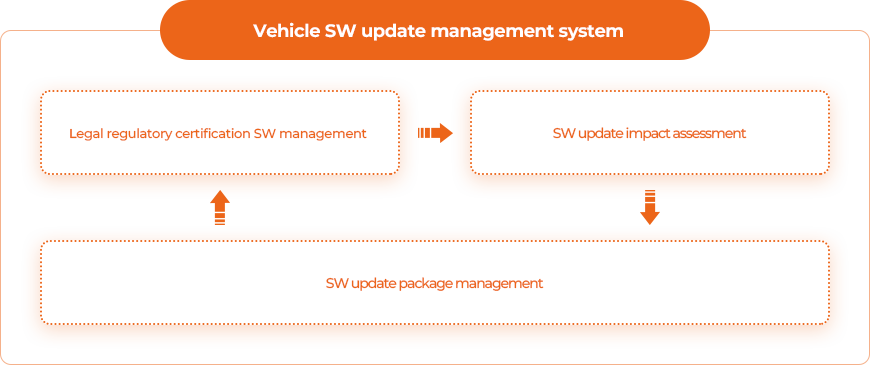With the advent of the Software-Defined Vehicle (SDV) era, the vehicle life cycle is expanding, as continuous software updates can enhance vehicle functions even after release.
As the significance of software updates grows, the DevOps methodology, which integrates development and operations to cycle the design-development-verification-deployment-operation-monitoring process, is gaining attention. Simultaneously, as regulations such as Europe's R156 and Korean Motor Vehicle Management Act amendment are being legislated worldwide, impact analysis and version management in response to software updates have become essential.
-
There is too much software, making version management complicated.
-
I find it difficult to check the impact of software updates one by one.
-
It is difficult to determine whether software can be updated.
-
I don’t know how to respond to regulations and requirements regarding software updates (e.g. UN R156, Korean Motor Vehicle Management Act).
with RxSWIN-based systems.
-

- Software management by vehicle type and regulatory region
-
- Regulatory certified software management
- Manage software versions, history, and update status from development to disposal
- Manage the status of controllers assembled in vehicles when the product is manufactured
- Check for software and hardware component misinstallation
-

- Systematic and detailed impact analysis
-
- Analysis and evaluation of the impact of software changes, side effect management
- Container configuration for efficient regulatory item management
(Support for RxSWIN management by vehicle type and regulatory region)
-

- Conducting safe software updates
-
- Support for integrated package for vehicle-wide software updates
- Support for safe updates with software authenticity and integrity verification
- Regulatory certified software update capability
and systematically manage software versions and history.
